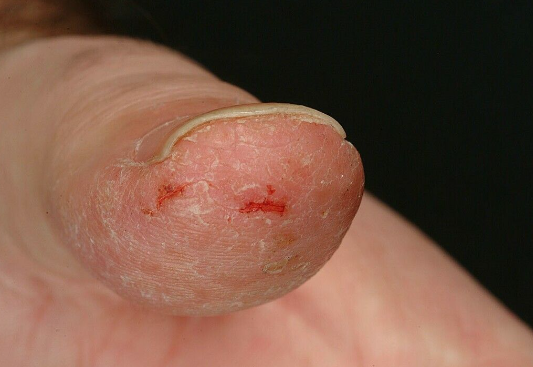Fingertip Eczema, also known as fingertip dermatitis, is a chronic, localized form of eczema affecting the fingertips. ICD-10 code is L30.
It occurs most common in adults.
Predisposing factors may include atopy, irritating chemicals or constant frictional contact, such as when working with paper. Causative factors may include allergens in occupational and hobby activities, constant wetting and drying cycles, as well as friction.
This type of eczema may be an atypical manifestation of contact allergy in florists, dentists and those working with acrylic adhesives. Fingertip eczema often recurs during the winter months, but can also be observed throughout the year.Characteristic features of this eczema include dry, scaly, cracked, pink skin on the fingertips. Under the scaling, the skin is red and painful. The fingertips become very dry, smooth, red, and prone to cracking. In severe cases, deep, sharp, painful fissures may occur. Blisters are not typical. The process stops before reaching the distal interphalangeal joint. One or more fingers may be involved.
Pruritus is limited and often absent. Pain and burning are typical. Inflammation tends to be chronic, and the condition may persist for months to years and be very resistant to treatment.- Psoriasis
- Allergic contact dermatitis
- Allergy to artificial nails
- Candidal infection.
Eliminating and consistently avoiding aggravating factors can be challenging. Treatment includes avoiding wetting and drying cycles, contact with irritating detergents, high temperatures and friction, and reducing irritation from frequent hand washing. Cotton gloves and use of heavy moisturizers at night can help control this highly resistant form of eczema.
This condition should be treated as subacute or chronic eczema; irritants should be avoided and the affected areas should be liberally coated with emollients such as petroleum jelly. A cream containing lactic acid may be effective. Topical steroids of moderate potency, with or without occlusion, provide temporary relief.
